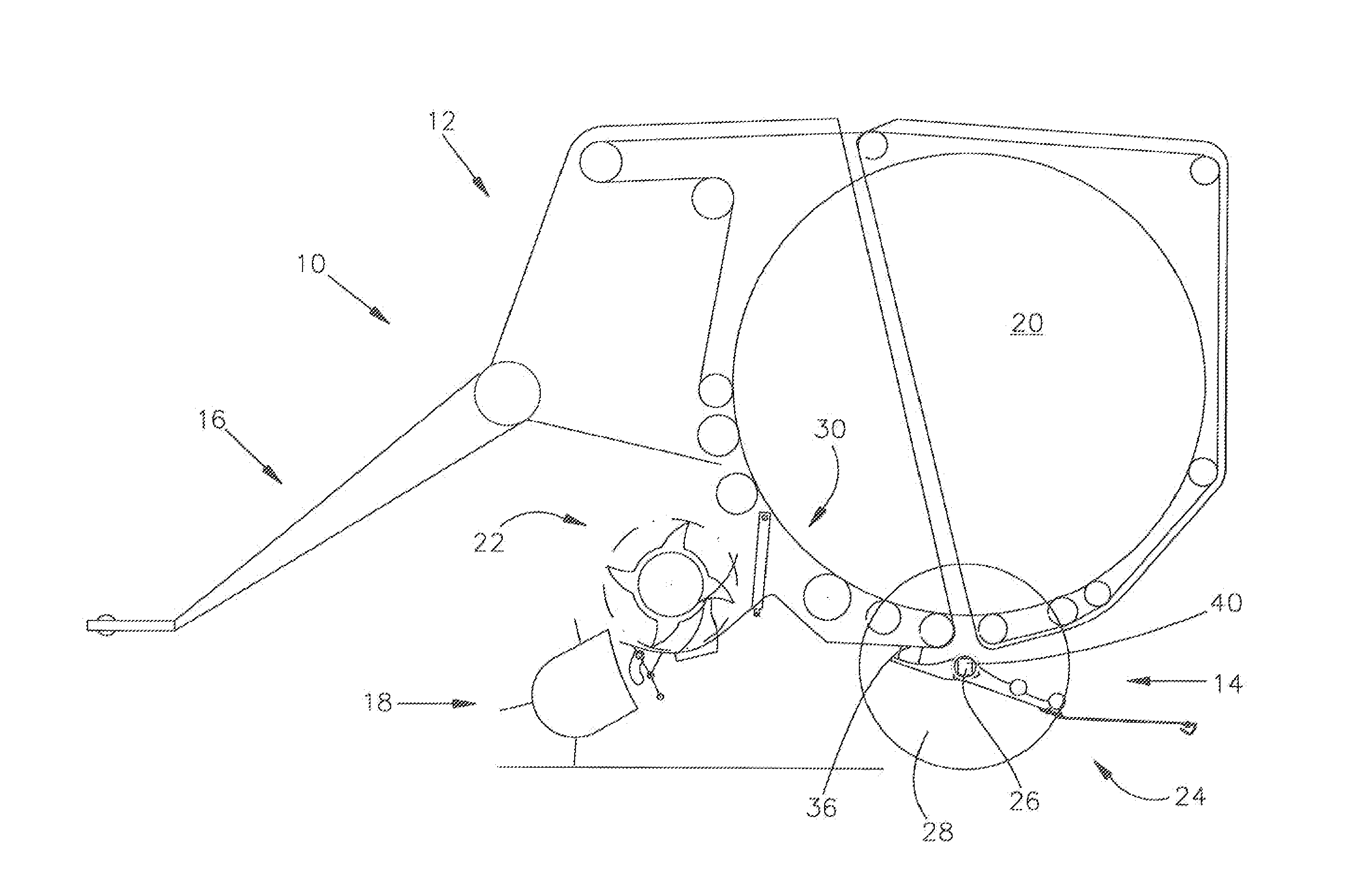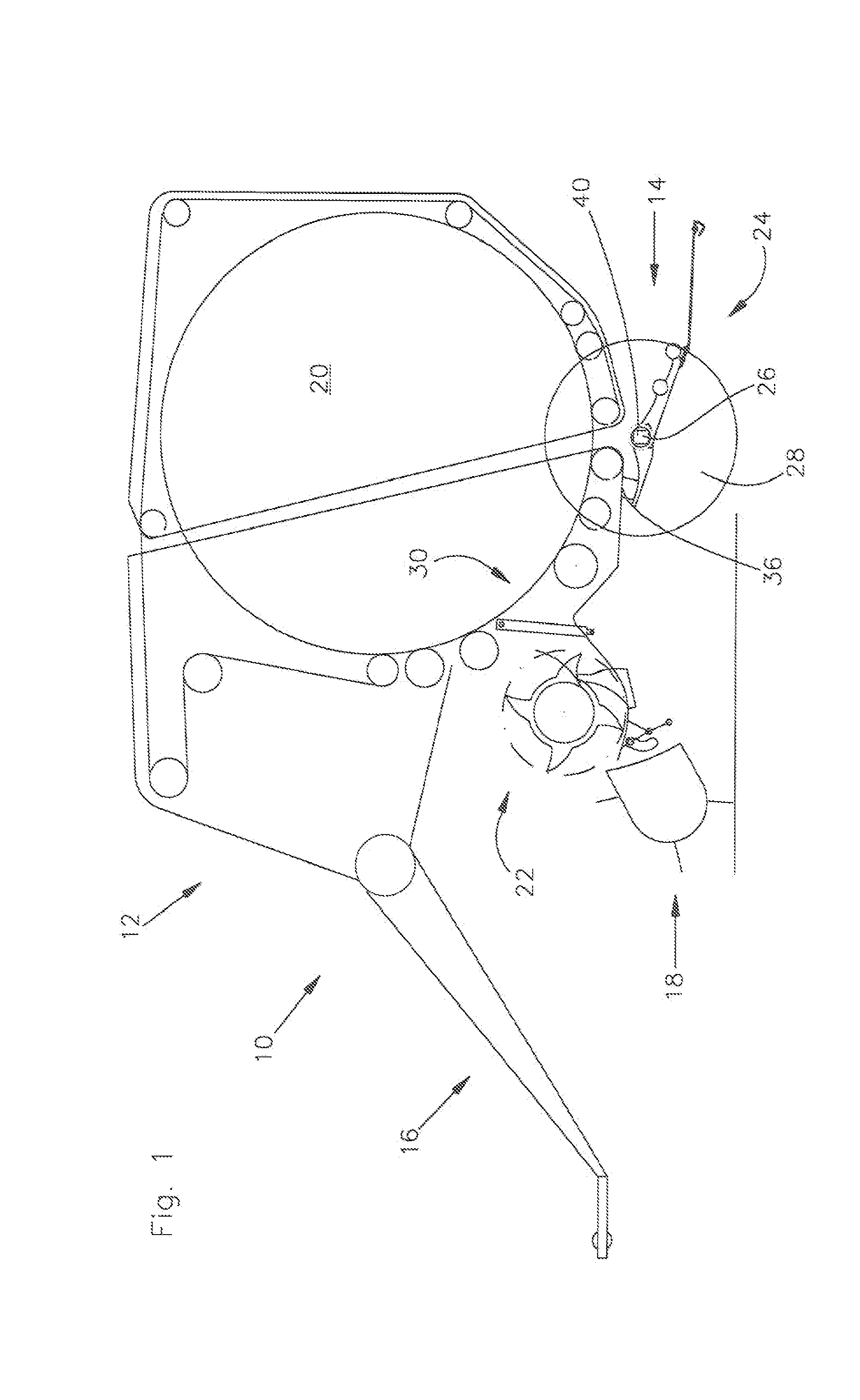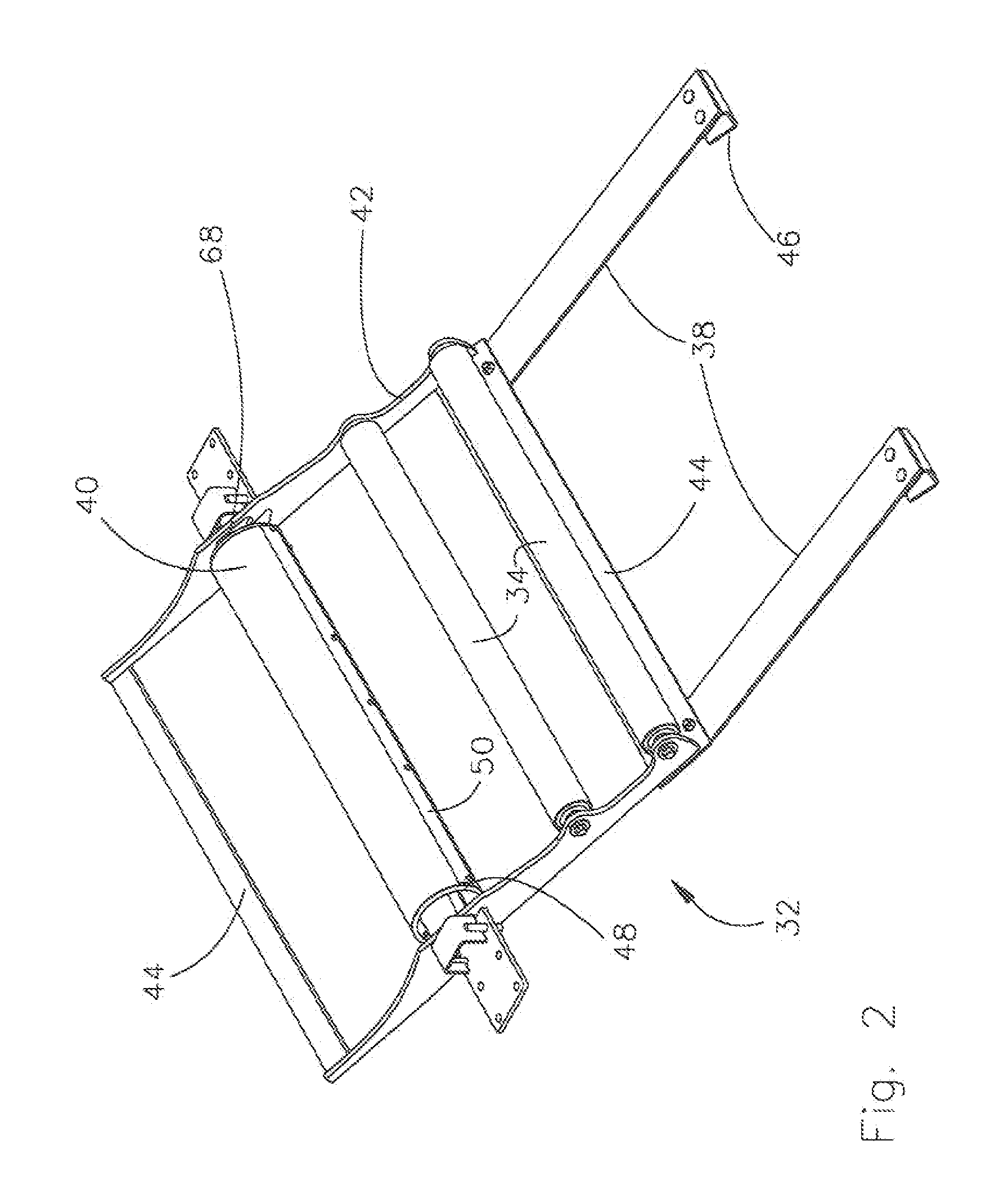Round Baler
a baler and round bale technology, applied in baling, agriculture tools and machines, agriculture, etc., can solve the problems of slowed down and danger of round bale contact, and achieve the effect of preventing damage to the unloading apparatus through contact with the ground
- Summary
- Abstract
- Description
- Claims
- Application Information
AI Technical Summary
Benefits of technology
Problems solved by technology
Method used
Image
Examples
Embodiment Construction
[0025]A round baler 10 shown in FIG. 1 is of standard construction, i.e. it has a superstructure 12, a chassis 14, a drawbar 16, a crop receiver 18, a bale chamber 20 and a feed apparatus 22. In addition, an unloading apparatus 24 and a cover 40 are provided, which differ, however, from the prior art or are unknown there.
[0026]The round baler 10 is represented as a drawn round baler 10 having a size-variable bale chamber 20; it could equally well be a self-propelling round baler 10 and / or one having a constant-size bale chamber 20, the type of (non-detailed) press elements being immaterial.
[0027]The superstructure 12 rests on the chassis 14 and bears the crop receiver 18, the feed apparatus 22 and the unloading apparatus 24 and forms the bale of chamber 20 between (non-detailed) single-part of multipart side walls.
[0028]the chassis 14 contains a rigidly or resiliently fitted cross-stay 26, which at the same time serves as an axle for wheels 28.
[0029]The drawbar 16 is connected in a ...
PUM
 Login to View More
Login to View More Abstract
Description
Claims
Application Information
 Login to View More
Login to View More - R&D
- Intellectual Property
- Life Sciences
- Materials
- Tech Scout
- Unparalleled Data Quality
- Higher Quality Content
- 60% Fewer Hallucinations
Browse by: Latest US Patents, China's latest patents, Technical Efficacy Thesaurus, Application Domain, Technology Topic, Popular Technical Reports.
© 2025 PatSnap. All rights reserved.Legal|Privacy policy|Modern Slavery Act Transparency Statement|Sitemap|About US| Contact US: help@patsnap.com



